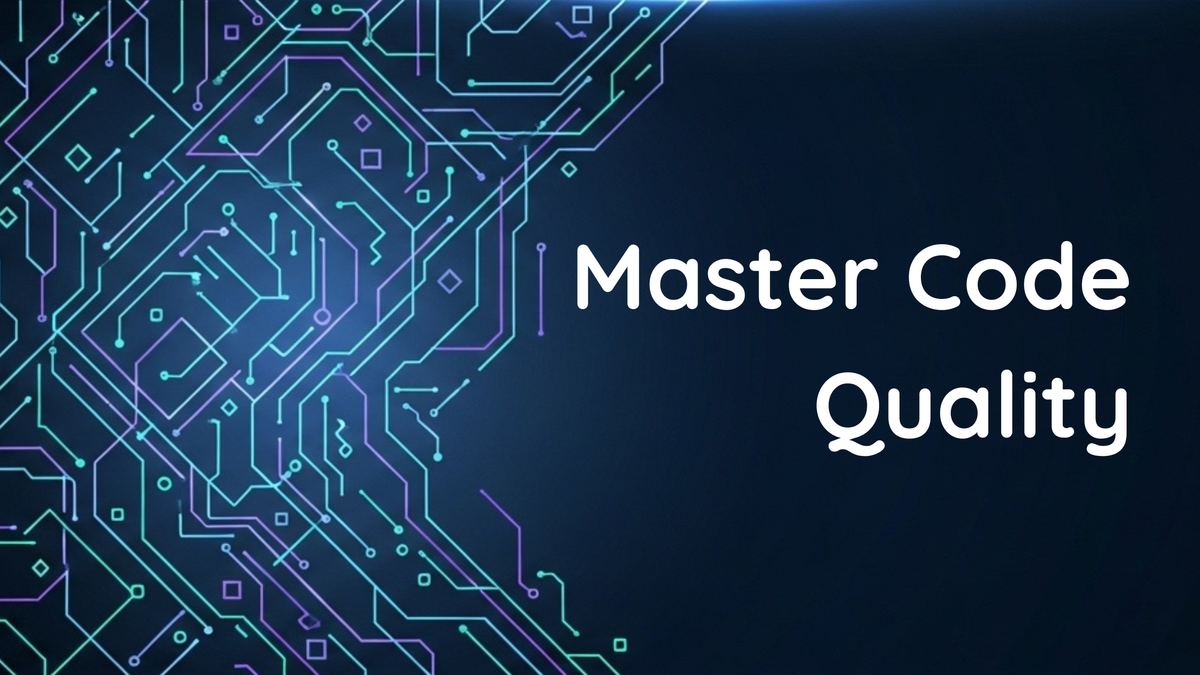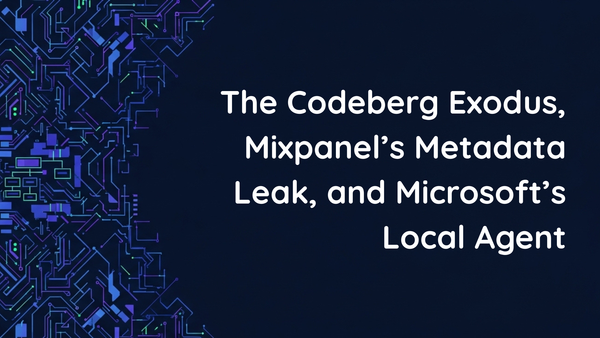A Guide to Improving Your Code Quality Metrics

Bugs 🐞 , They're the people who show up at every software development party without being asked. In fact, more than a third of developers spend a huge 25% of their time just fixing bugs. 🐛 It feels like the bugs are in charge when you are stuck in a cycle of fixing them and doing fire drills.
You can never get rid of all the bugs, but you can make a process that stops them from happening, makes your app more stable, and most importantly, lets your engineers do what they do best: come up with new ideas and add useful features.
The key is measuring what matters. Code quality metrics give you the essential guardrails to harness the power of AI safely. Let's dive into the metrics you should be tracking and a practical playbook for improving them.
What Are Code Quality Metrics, Really?
In short, code quality metrics are objective data points that show you how good your code is.
Of course, "good" is a matter of opinion.
Is the code easy to read?
Is it code that has no bugs?
Is it code that works very well?
Yes, all of the above are true. That's why you need more than one metric to get a full picture of how reliable, maintainable, and efficient your code is.
The Domino Effect of Bad Code (Now on Hyperdrive)
Bad code quality isn't just a technical issue; it's a business issue that has a lot of bad effects. This can happen faster than ever now that AI is involved.
- More Fire Drills: Engineers are always being pulled away from their planned work to fix problems that come up, sometimes because of small, AI-generated bugs.
- More code churn: Developers waste time rewriting or deleting AI-generated code that works but doesn't fit the way the system is built.
- Longer Cycle Times: Code reviews take longer because developers have a hard time understanding and checking big chunks of machine-generated logic.
- Decreased Velocity: Ironically, the initial speed from AI can cause long-term slowdowns as the team deals with a codebase that is getting more complicated and fragile.
- Less Value Delivered: In the end, bad code means that your customers get less value from your business.
It's a recipe for developers to get burned out, teams to fight, and a product that doesn't keep up with the market.
The Metrics That Matter: Shifting from Reactive to Proactive
You need to look at both lagging and leading indicators to really understand the quality of the code.
Lagging Indicators: The Rear-View Mirror
You measure lagging indicators, like the well-known DORA metrics, after the code is live. You need them to understand how your work affects others. The two most important things for code quality are:
- Change Failure Rate (CFR): This tells you how often a change you make doesn't work. Since your team started using AI tools, has your CFR been going up? This is a very important warning sign.
- Mean Time to Restore (MTTR) keeps track of how long it usually takes to fix a problem. A high MTTR means that the bugs being added are serious, which is a bigger risk when AI code hasn't been checked.
These metrics are great for figuring out what's wrong, but they only tell you about a problem after it has already hurt your users.
Your AI-Powered Co-Pilot: Leading Indicators
This is the point at which the game changes. Before code is deployed, leading indicators check the health of your development process. They are the most important co-pilot for any AI-driven team, helping you find problems and change your course early.
These are the most important leading indicators right now:
- Work In Progress (WIP): AI tools let one developer make more things, which could raise their WIP. You can find engineers who are overworked before they burn out or start merging low-quality code by using a platform that shows WIP.
- PR Size: This number is more important than ever right now. AI can write a thousand lines of code in a minute, which makes huge pull requests that are hard to review. One of the main causes of bugs is large PRs, whether they are made by people or machines.
- Depth of Review: Code review isn't just about finding typos anymore. When it comes to AI-generated code, it's about checking the logic, intent, and how well it fits into the overall architecture. A quick look at an AI-assisted PR is a huge red flag. Your review process needs to change to fit this new situation.
- Test Coverage: This can't be changed. You need strong automated tests to show that the code works as it should if an AI writes it. Not having enough tests on new, AI-made features is a big risk.
Your 4-Step Playbook for Improving Code Quality
It's one thing to know the metrics; it's another to make them better. This is a simple, useful framework for today's engineering team.
- Compare Your Current Situation
You can't fix something if you can't see it. The first thing you need to do is get a clear baseline. EvolveDev is an example of a software engineering intelligence platform that works with your tools (like GitHub and Jira) to automatically show you these metrics. This lets you see right away how AI is changing the way you develop without having to do any manual data wrangling. - Make team goals that everyone can work toward
Choose one or two important metrics to focus on once you have your data. A good goal for a team that uses AI might be "Keep our current test coverage percentage while increasing deployment frequency" or "Make sure no PR with more than 200 lines of code is merged." Setting a goal together makes everyone on the team feel like they own it. - Use real-time nudges to drive success
It's too slow to wait for a retrospective to talk about a bad PR. Use tools that give you feedback right away. For example, you could set up automatic notifications in Slack to let you know when a big, AI-assisted PR is made or when code with low test coverage is about to be merged. These little pushes in the moment help you make better habits. - Link your engineering work to the bigger picture 📈
Finally, let your team see the "why." Use dashboards to show how your quality guardrails are making it safe for you to use AI. You can show that by keeping the Change Failure Rate low, the amazing speed of AI is turning into useful features and business value, not just more bugs. When engineers see that good discipline makes their new tools work better, they will be your biggest supporters of quality.
Take Control of Your Code Quality
AI is a powerful force multiplier, but it’s not a substitute for sound engineering discipline. The best teams are learning to treat it as a brilliant but junior developer—it needs oversight, review, and guidance.
By focusing on the right leading indicators, you can create the essential safety net that allows your team to harness the speed of AI without sacrificing the stability of your product. Stop letting bugs dictate your roadmap. It’s time to get the visibility you need to build better software, faster. 🚀
Ready to Turn Insights into Action?
Knowing what to track is only half the battle. EvolveDev provides the engineering intelligence platform to do it automatically. We connect to your tools like GitHub, Jira, and Slack in minutes, giving you a single source of truth for all the metrics discussed here—and more.
Stop flying blind. It's time to give your team the data-driven clarity they need to harness the power of AI safely and effectively.
Book a demo of EvolveDev today and start building with confidence.





